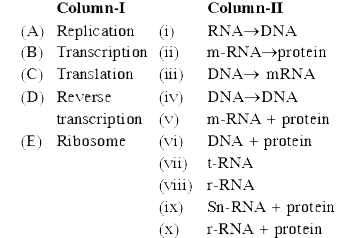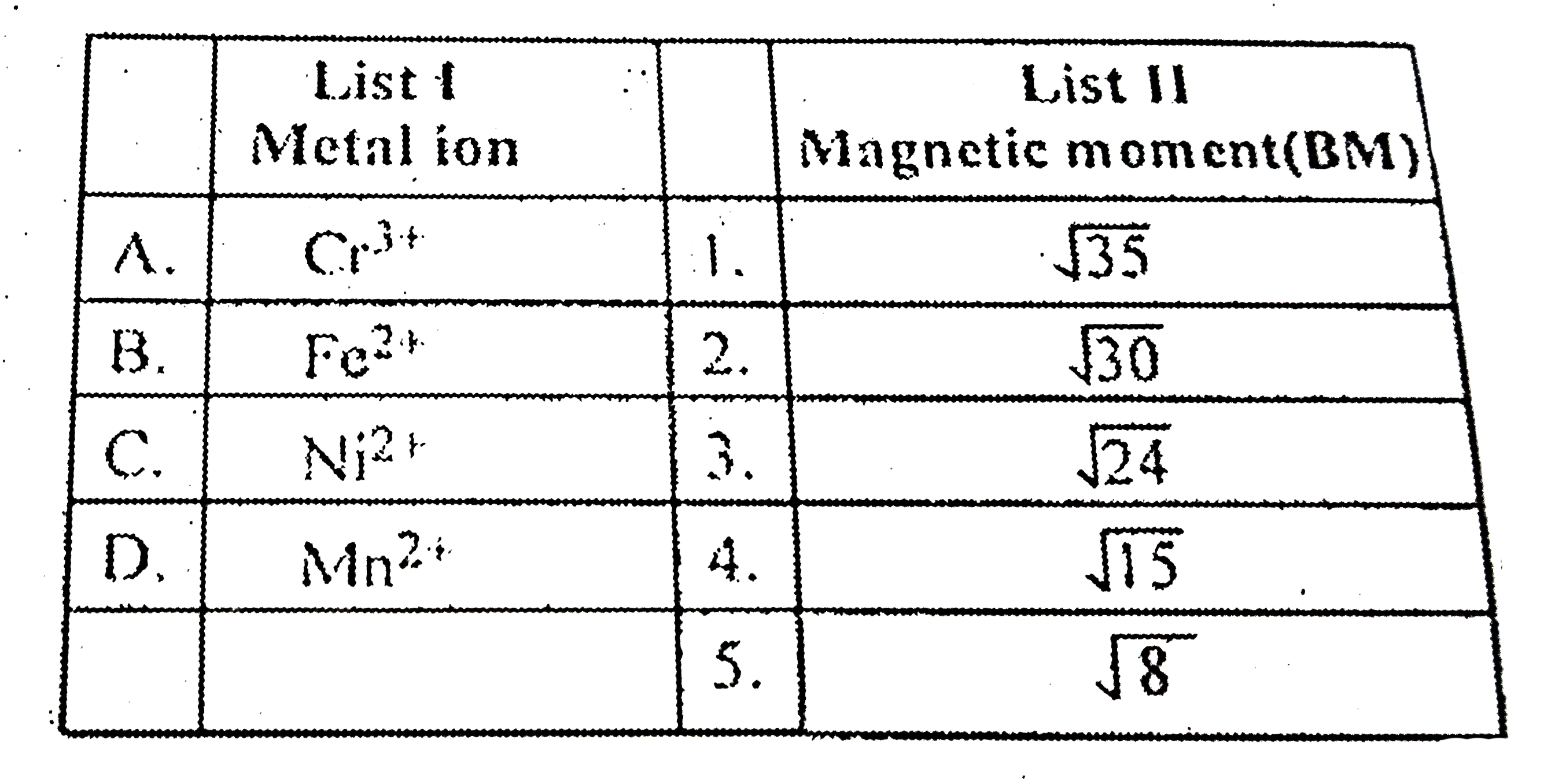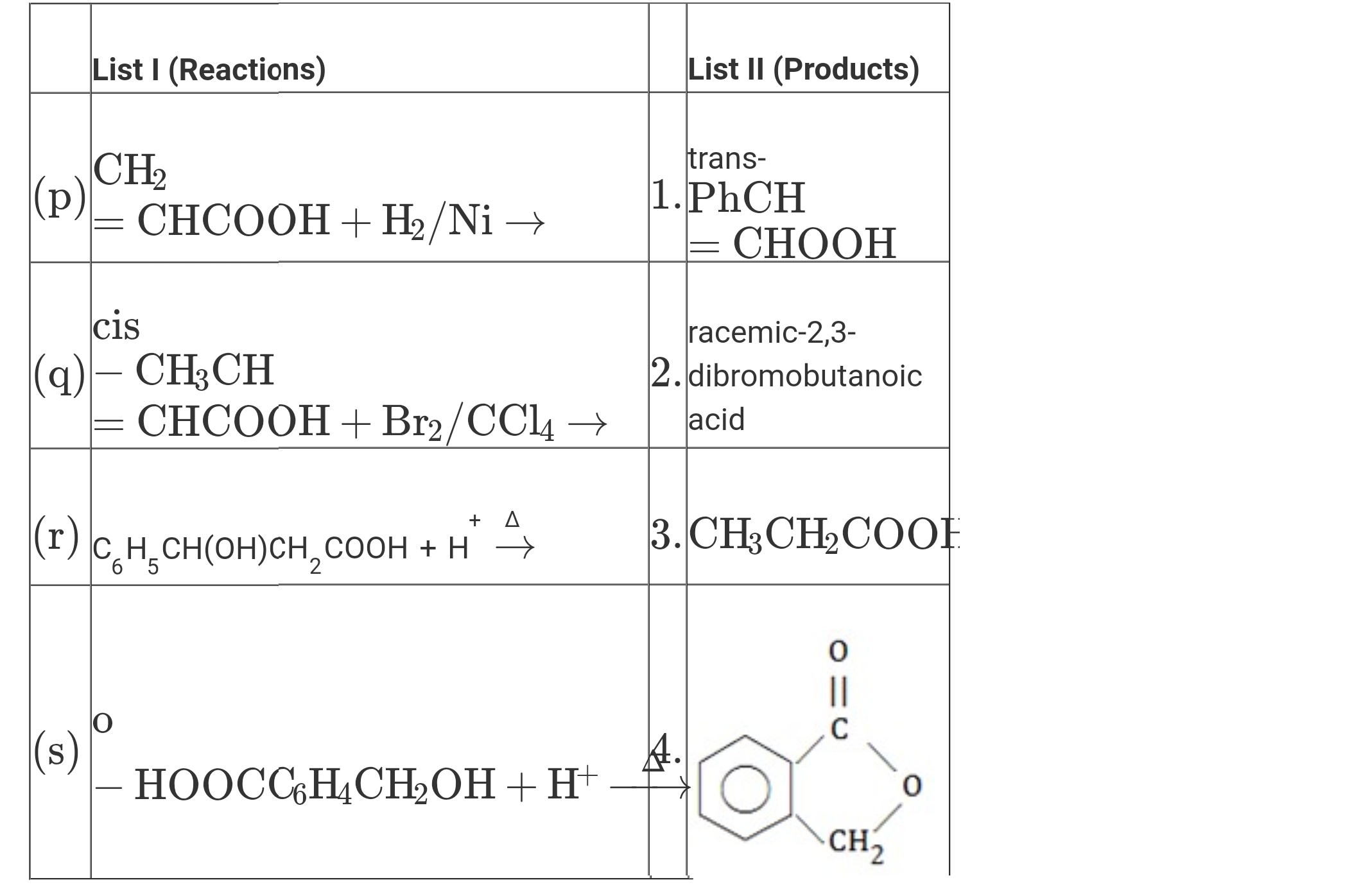Match list I with list II and select the correct answer :
Column-IColumn-II(A)Coagulation(p)Scattering of light(B)Dialysis(q)Washing of precipitates(C)Peptization(r)Purification of colloids(D)Tyndall effect(s)Electrolyte(t)Visibility of tall of comets
The correct Answer is:A→s; B→r ; C→ q ; D→p,t
To solve the problem of matching items from Column I with Column II, we will analyze each term in Column I and find its corresponding match in Column II based on their definitions and characteristics.
1. Coagulation (A):
- Coagulation refers to the process where colloidal particles aggregate to form a larger mass, often facilitated by the addition of an electrolyte. The ions from the electrolyte neutralize the charge on the colloidal particles, leading to their aggregation.
- Match: Coagulation (A) matches with Electrolyte (s).
2. Dialysis (B):
- Dialysis is a separation process that removes smaller particles from larger particles in a liquid. It is commonly used for the purification of colloids and can be likened to the function of kidneys in filtering blood.
- Match: Dialysis (B) matches with Purification of colloids (r).
3. Peptization (C):
- Peptization is the process of converting a coagulated substance back into a colloidal state. This process involves the addition of a dispersing agent.
- Match: Peptization (C) matches with Washing of precipitates (q).
4. Tyndall Effect (D):
- The Tyndall effect is the scattering of light by particles in a colloid or very fine suspension. This phenomenon makes the path of a beam of light visible in a colloidal solution.
- Match: Tyndall effect (D) matches with Scattering of light (p).
Final Matches:
- A → s (Coagulation → Electrolyte)
- B → r (Dialysis → Purification of colloids)
- C → q (Peptization → Washing of precipitates)
- D → p (Tyndall effect → Scattering of light)
Summary of Matches:
- A - s
- B - r
- C - q
- D - p
- Coagulation refers to the process where colloidal particles aggregate to form a larger mass, often facilitated by the addition of an electrolyte. The ions from the electrolyte neutralize the charge on the colloidal particles, leading to their aggregation.
- Match: Coagulation (A) matches with Electrolyte (s).
- Dialysis is a separation process that removes smaller particles from larger particles in a liquid. It is commonly used for the purification of colloids and can be likened to the function of kidneys in filtering blood.
- Match: Dialysis (B) matches with Purification of colloids (r).
- Peptization is the process of converting a coagulated substance back into a colloidal state. This process involves the addition of a dispersing agent.
- Match: Peptization (C) matches with Washing of precipitates (q).
- The Tyndall effect is the scattering of light by particles in a colloid or very fine suspension. This phenomenon makes the path of a beam of light visible in a colloidal solution.
- Match: Tyndall effect (D) matches with Scattering of light (p).
- A → s (Coagulation → Electrolyte)
- B → r (Dialysis → Purification of colloids)
- C → q (Peptization → Washing of precipitates)
- D → p (Tyndall effect → Scattering of light)
- A - s
- B - r
- C - q
- D - p
Topper's Solved these Questions
Similar Questions
Match column I with column II and select the correct answer :

View SolutionMatch column-I with column-II and select the correct answer :-

View SolutionMatch the column–I with column–II and select the correct answer :-

View SolutionMatch the Column -I and Column-II and select the correct answer :-

View SolutionMatch list-I with list-II and select the correct answer using the codes given below lists

View SolutionMatch list I with list II and select the correct answer using the codes given below the list

View SolutionMatch list I with list II and select the correct answer using the codes given below the lists.

View SolutionMatch List I with List II and select the correct answer using codes given below the lists

View SolutionMatch list I with list II and select the correct answer using the codes given below the lists.

View SolutionMatch list I with list II and select the correct answer using the codes given below the lists.

View Solution
